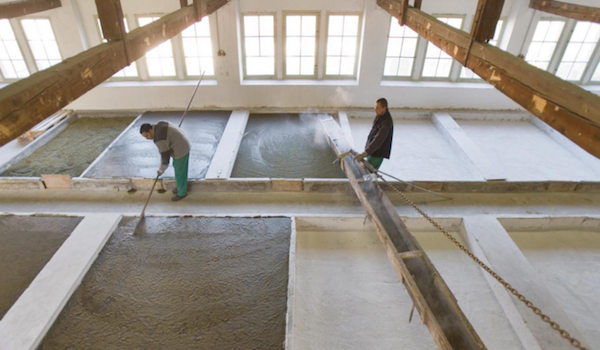
MAKING SOAP IN MARSEILLE
Delving into the world of Marseille soap-making in Selvedge issue 72, Anne Laure Camilleri celebrates one of France’s oldest crafts that's still alive today…

A rich cube of Marseille soap belongs to the collective memory of many generations. Its nostalgic advertisements, stamped and simple design convey an unpretentious luxury. Dating back to a manufacturing process regulated by King Louis XIV in 1688, ‘Marseille soap’ has its own turbulent history. Although France has an abundance of trademarked produce – and in the past over 100 factories in the Marseille region produced fine soaps – the term ‘Marseille soap’ was never officially registered. Hence in order to understand the journey Marseille soap has made generally, it is perhaps best to focus on one of its most trusted manufacturers.

For a century, Marius Fabre has understood the values of natural and safe cleaning products. The classic cube of soaps went out of fashion after World War 1 with the introduction of soap flakes and toilet soaps, but their enduring qualities were never questioned. They are in fact being rewarded today. Global demand for organic products is increasing and the old soap formula is more appealing than ever to conscious consumers. Healthy and environmentally friendly, white or green, real Marseille soap is indeed a safe bet.

In 1900, 22 year-old Marius Fabre set up shop in his backyard in Salon de Provence. Starting with two cauldrons and a few drying blocks, he soon established a solid network of salesmen. When WWI broke out he was drafted and his wife Marie ran the company for four years. In 1927, they moved to the former Couderc soap factory, which came with three of the six large cauldrons that are still operating today. By then, soap making was such a flourishing business that a special railroad track was built to connect the local railway station to the factory. Deliveries and shipments came and went swiftly. The golden years ended in the 1940s. After World War 11, washing machines replaced communal wash-houses and soap flakes ousted the household soap cube.

Historically, the wash-house was a social gathering place for women in small villages across France. They would chat as they rubbed their sheets with large 1kg white cubes of soap while their children played nearby. The introduction of the washing machine was a cultural and social revolution, according to Laurence Clavier, head of Marketing and Communications for Marius Fabre…
You can read this article in full in Selvedge issue 72. To buy your issue, click here.
